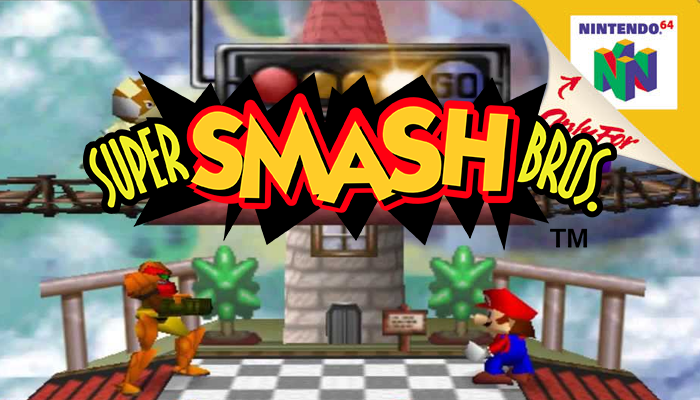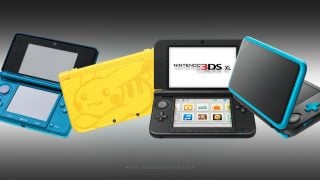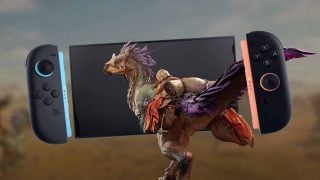The system that ushered most of Nintendo’s franchises into the third dimension, Nintendo 64, celebrated its 20th anniversary this year. We commemorated this sobering milestone back in June with a look at the system’s launch, games and impact on the industry. To keep the celebration going, we put together a list of the Nintendo Wire team’s favorite Nintendo 64 games, and a little background on what’s special to us about each one.
These are Nintendo Wire’s favorite games for Nintendo 64…

Super Mario 64
The Nintendo 64 had its work cut out for it well before it ever hit the market. Kicking off the 3D revolution on home consoles, this system needed to adapt established, beloved characters and genres into completely new styles of games. Somehow, in most cases, Nintendo nailed this transition on its first try; and in the process established the foundations of entirely new genres that still guide developers today. There’s no better example of this than Super Mario 64.
Mario has always been Nintendo’s star player, and a lot was riding on his successful transition to three dimensions. 3D games were clearly the future, but with no established baseline for what a 3D platformer looked like, Nintendo really had to start from scratch and define it for themselves. The result was Super Mario 64, a game with all the familiar environments and characters of the Mushroom Kingdom, that could now be viewed and explored from nearly infinite angles.
Not only did the third dimension provide a visual depth that we had never seen before; but it allowed Nintendo to break Mario out of his linear world. For the first time, he could approach challenges in a variety of ways, and thanks to the brilliant castle hub world, he had the freedom to tackle levels out of any particularly defined order. Super Mario 64 is much more than a simple transition from 2D to 3D, it’s a brilliant, ground-up rethinking of what made platforming, and more specifically Mario games, fun.

Super Smash Bros. (by Jaxson Tapp)
Outside of Mario Party and Mario Kart, there was perhaps no N64 title more suited to ruining friendships and making everyone feel included than Super Smash Bros. Built around Masahiro Sakurai’s crazy dream of making a four-player brawler at a time when the fighting genre wasn’t selling particularly well, Super Smash Bros. carved out it own place among both fighting and party games by introducing unique mechanics that catered to fans of both. Rather than deplete your opponent’s health, the goal was to knock them off the stage. Damage was calculated in percentage (percentage of what, exactly?), and as your damage percentage rose, the easier it was to knock your character off of the stage. Platformers were a big influence on Super Smash Bros., which led to its unique build as a “platform fighter.”
Super Smash Bros. was also the first game to really pit the characters from various Nintendo franchises against one another, which Sakurai didn’t believe Nintendo would actually sign off on. His solution was to work on the game without any official sanction from Nintendo, and he didn’t show them the product until he was sure it was well balanced and would be received well. He needn’t have worried, apparently, because they loved it. Thanks to its gameplay, character cast, and stunning soundtrack, Super Smash Bros. turned out to be a hit, selling 2.83 million copies in the US, and 1.97 copies in Japan.
Super Smash Bros is a game that really brought people together for endless hours of fun. Literally endless, I still play it or one of its sequels at least once a week, and I’ve spent a huge chunk of my life playing the original. Sure, the single player was short and repetitive, but I still spent hours plowing through enemies in the single player mode trying to unlock Ness. Of course there was always more fun to be had with friends around, beating on each other’s favorite Nintendo characters was something of a favorite pastime among youths who owned a Nintendo 64. The feeling of hectic brawling that Super Smash Bros. brought into my life is something I still enjoy to this day. Whether I’m sitting down in front of an N64 with my brother, tri-handled controller gripped tightly, or playing online in my living room with my trusty, spice-orange GameCube controller plugged into my Wii U, Super Smash Bros still gives me an intense satisfaction I haven’t quite felt while playing other party games.

Paper Mario
Following up the stellar collaboration between Nintendo and Squaresoft that was Super Mario RPG: Legend of the Seven Stars, Paper Mario had its work cut out for it. Fans now had a baseline for what a Mushroom Kingdom role-playing game should feel like, and a really good one at that. Thankfully, Paper Mario wouldn’t be content to simply build upon the foundation that Mario RPG had laid, it created and wholly embraced its own personality, and spawned a long line of direct and spiritual sequels in the process.
Paper Mario’s most forthcoming personality trait is its aesthetic. The entire game plays like a journey through a pop up book, with every element of the characters and environments boasting a handcrafted feel; one that directly preempted some more recent yarn and clay adventures. The charming style is bolstered by the character dialogue, which is always light-hearted and funny (especially when it breaks the fourth wall).
Mechanically, Paper Mario adapted many of Super Mario RPG’s gameplay systems. A smart move, as they themselves were already a fantastic blend of Mario’s bouncy, playful attributes and the more thoughtful, strategic elements of a turn-based RPG. This brilliant combination carried over into Paper Mario’s direct sequel on Gamecube, and also grandfathered the long line of Mario and Luigi games that would later appear on Nintendo’s handhelds.
It’s been an unfortunately long time since the Paper Mario series has been treated to an entry that lives up to the original. We’ve been on a detour from what made these games great for well over a decade now. While it may be a bit early to pass judgement on the imminent Paper Mario: Color Splash, it certainly doesn’t look like the entry that will take the series back to its roots. Let’s not lose hope, though, sooner or later this franchise is bound to turn a page back to RPG greatness.

The Legend of Zelda: Majora’s Mask (by Ben Fruzzetti)
In the long history of Zelda, Majora’s Mask is an outright anomaly. At a glance, it appears to be almost identical to Ocarina of Time in terms of graphics and controls, but anybody who’s played it will tell you how different it is. This game is creepy, unnerving, and downright terrifying at times, giving off an atmosphere of almost perpetual despair. Link’s journey through the land of Termina is fraught with peril, questions, and people who end up facing the darkness of the ensuing apocalypse. Its tone is unlike any other entry in the series, but that’s what makes it work so well.
While the game is mechanically quite similar to Ocarina, there are two big differences – the three-day cycle and the mask system. The three-day cycle put everything in the world on a schedule, necessitating the careful plotting of tasks and side quests in order to accomplish as much as possible. Meanwhile, the mask system gifted a variety of extra tools and tricks that Link could use, from the agility-boosting Bunny Hood to the enlarging Giant’s Mask. There were even three new forms Link could use – Deku, Goron, and Zora – that dramatically changed gameplay experiences. All this combined to make a wholly unique yet genius take on the Zelda formula.
For a game made in only a year’s time with a ton of reused assets, Majora’s Mask somehow proves itself as one of the most acclaimed and well-done games on the N64. Its twisted tale of impending doom and wasted regret is still being analyzed to this day, and it’s stupendous how well it holds up over fifteen years later. It didn’t exactly set the path for the franchise to come, but perhaps that’s okay – its unique twist on the Zelda flavor is what makes it so special in the first place.

The Legend of Zelda: Ocarina of Time (by Logan Plant)
Besides being the greatest Nintendo 64 game, Ocarina of Time is also one of the best games ever made. Similar to what Super Mario 64 did for the platforming genre, Ocarina of Time pushed what it meant to be an adventure game to new heights, redefining not only an entire genre, but the entire video game industry as well.
When Ocarina of Time first came out in 1998, gamers were awestruck when they stepped into Hyrule Field for the first time. The area seemed massive in those days, as it was the first truly expansive 3D adventure title to hit shelves. In order to support Link’s transition into the third dimension, the game introduced an ingenious targeting system that has been included in every 3D Zelda game since.
Boot up Ocarina of Time today, and you’ll find the entire game is absolutely oozing with nostalgia. The soundtrack contains one of the best video game scores ever, with memorable melodies at just about every turn. The characters Link meets during his adventure are just as unforgettable, as is the story that sends him all over the land of Hyrule.
Ocarina of Time is the only game I find myself playing through every year. There are so many moments worth experiencing over and over that make replaying the adventure completely worth it. When Link pulls the Master Sword for the first time, to when Link and Zelda have to escape the crumbling confines of Hyrule Castle. Ocarina of Time is one of the greatest pieces of art the industry has ever seen, and it definitely stands the test of time.
Leave a Comment

